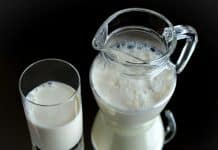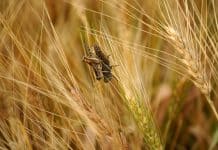This article is part of a series of informative animal health articles. The series goes hand in hand with the #VideoVet video series – watch the video below.
The few millilitres of liquid inside the bottle you are holding may look unimpressive.
Yet its effect on your herd can mean the difference between disaster and profit.
What is a vaccine?
A vaccine is a strain of an infectious disease; in other words, the disease causing organism that will make your livestock sick. When a pathogen enters the body, the immune system reacts by producing antibodies to fight that pathogen. When you inject the infective agent into the body, it triggers an immune reaction which gives the body some resistance to that specific disease.
It is, however, important to realise that the immune reaction takes time (between 1-3 weeks) to develop. Vaccines enable you to build immunity in your herd against a variety of diseases, which would otherwise cause great losses. Vaccination is literally the thin line between profit and loss.
Keep in mind though that vaccines cannot be used as a treatment for disease. It protects an animal against disease prior to exposure, but the animal’s body needs time to produce the necessary protection after vaccination.
Types of vaccines
There are essentially two types of vaccines: live and inactivated (or killed) vaccines. Live vaccines come in pill form and must be mixed with a diluent before use (e.g. Lumpyvax®). Inactivated vaccines are premixed in one container and need no mixing before use. They are also provided in combination form, such as Covexin®10, which makes it easy to vaccinate animals against more than one disease simultaneously.
Inactivated vaccines must be given more frequently than live vaccines. It is very important to note which type of vaccine you are using, as this will give you an exact indication of the dose frequency of the product. When starting with a vaccination programme, ensure that your animals receive the necessary boosters at the correct intervals.
If you are unsure about which to use, read the package insert. Some live vaccines can cause side effects if used incorrectly.
How to handle vaccines
Take extra care when using a vaccine, as some of the diseases that animals are vaccinated against, are zoonotic (transferrable to humans). Consult your medical practitioner if you have accidentally pricked yourself.
It is vital that vaccines are kept cool. Place it in a cooler bag with an ice pack as soon as you have purchased it. Back on the farm the vaccine should be stored in the fridge, but make sure it does not freeze. When you are ready to use it, transport it to the handling facility in a cooler bag with ice packs.
Always make sure that you are using the correct injection technique – some vaccines can only be injected in the muscle, while others must be administered subcutaneously. Also ensure that you administer the correct dose, or the product won’t work and the animals will be unprotected. Try and use a new needle for each animal to prevent disease transmission between animals.
For more information, contact your MSD Animal Health representative or visit www.msd-animal-health.co.za. To watch more videos in this series, click here.







